Bologna is my favorite city in Italy, and over the years, I’ve discovered five magical places you must visit. While the city has become more tourist-focused lately, there are still gems that make Bologna unique. Spend a day meandering through the city’s historic center to check out these wonderful sites.
The Sette Chiese di Santo Stefano
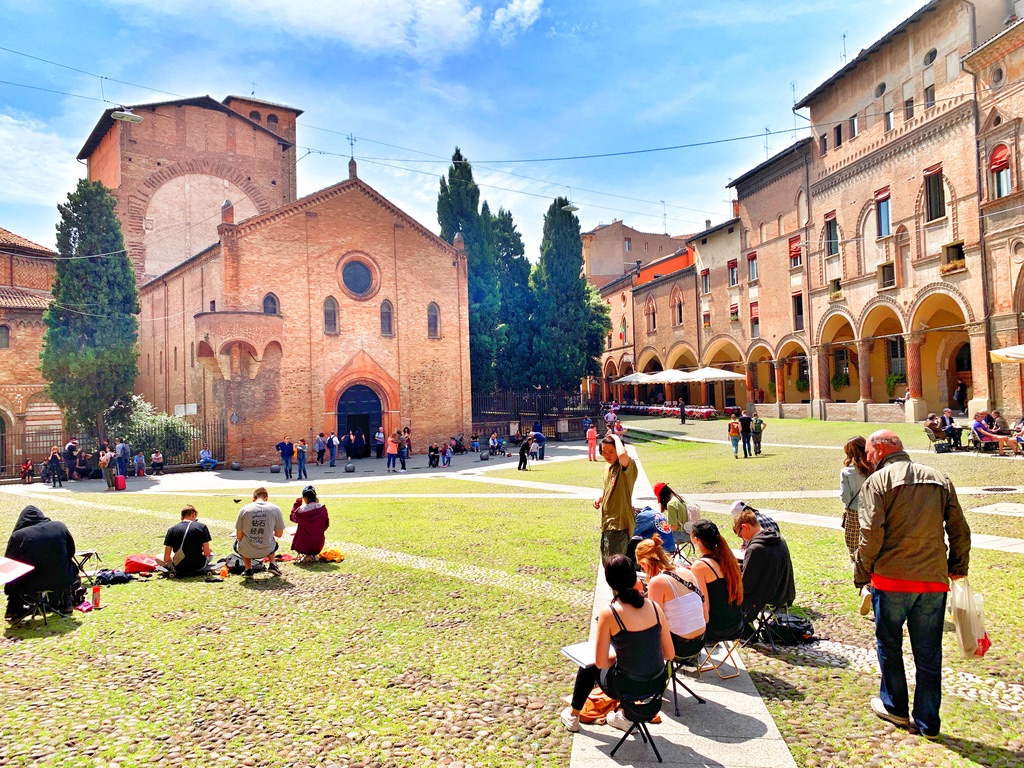
Anchoring the triangular-shaped Piazza Santo Stefano is the complex of Sette Chiese di Santo Stefano. St. Petronius, Bologna’s patron saint, wanted to create a church that represented the passion of Christ and the holy sepulchre. He ordered the church built on what was once a Roman temple of Isis. If you look at the image above, you can see Church of the Crucifix; the remaining churches flank this one.
When you enter the main church, you note that the altar is at the top of a flight of stairs. The crucifix for which the church is named hangs above the altar. (top, left) Below the altar is a crypt that is there solely for prayer and meditation. On an altar in that crypt are the remains San Martino.
The Church of the Holy Sepulchre, the oldest of the churches, is a replica of Jerusalem’s Holy Sepulchre. The altar in this church (middle photo) also sits at the top of the stairs. Below the altar is where San Petronius’s remains rested until they moved to the basilica that bears his name.
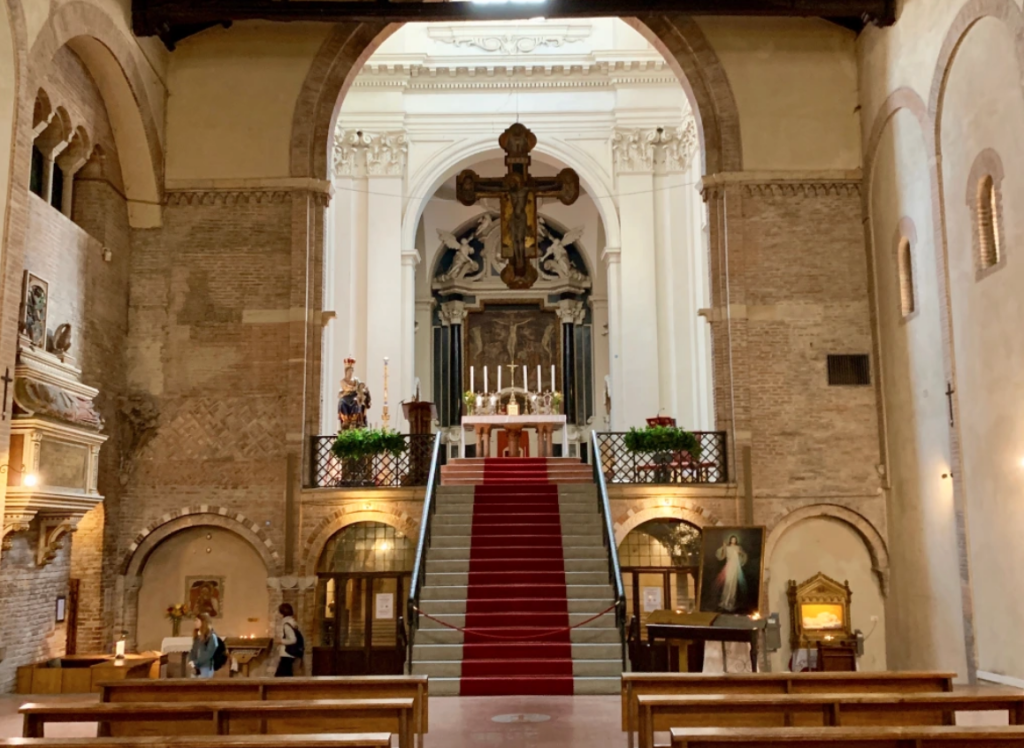
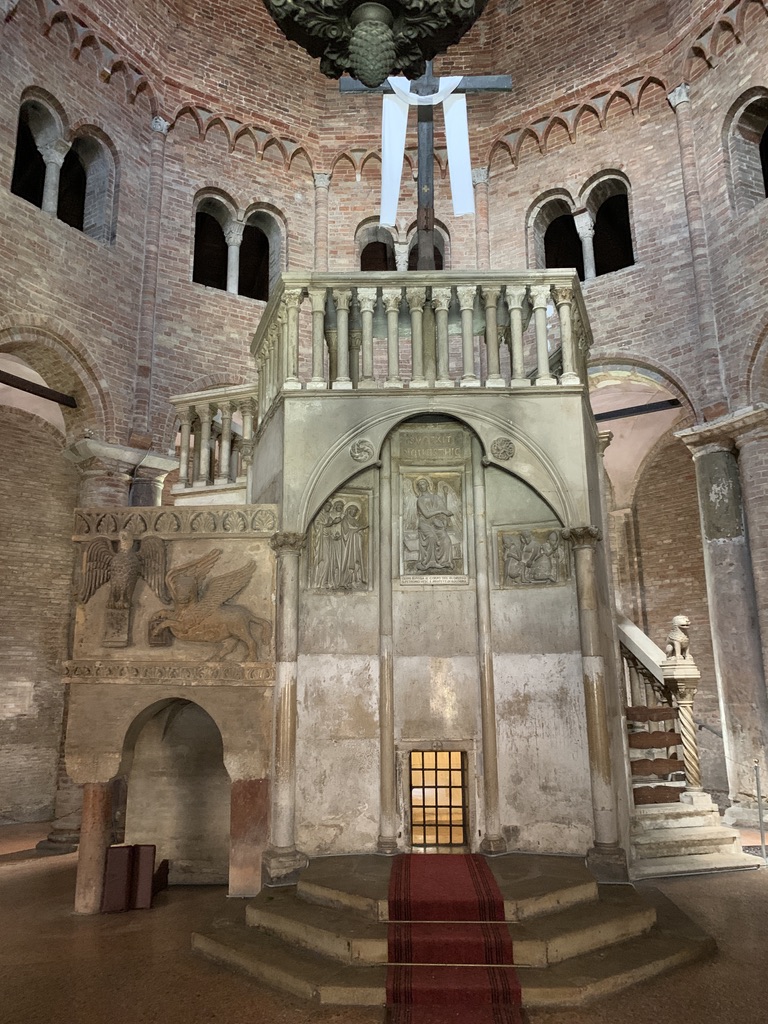
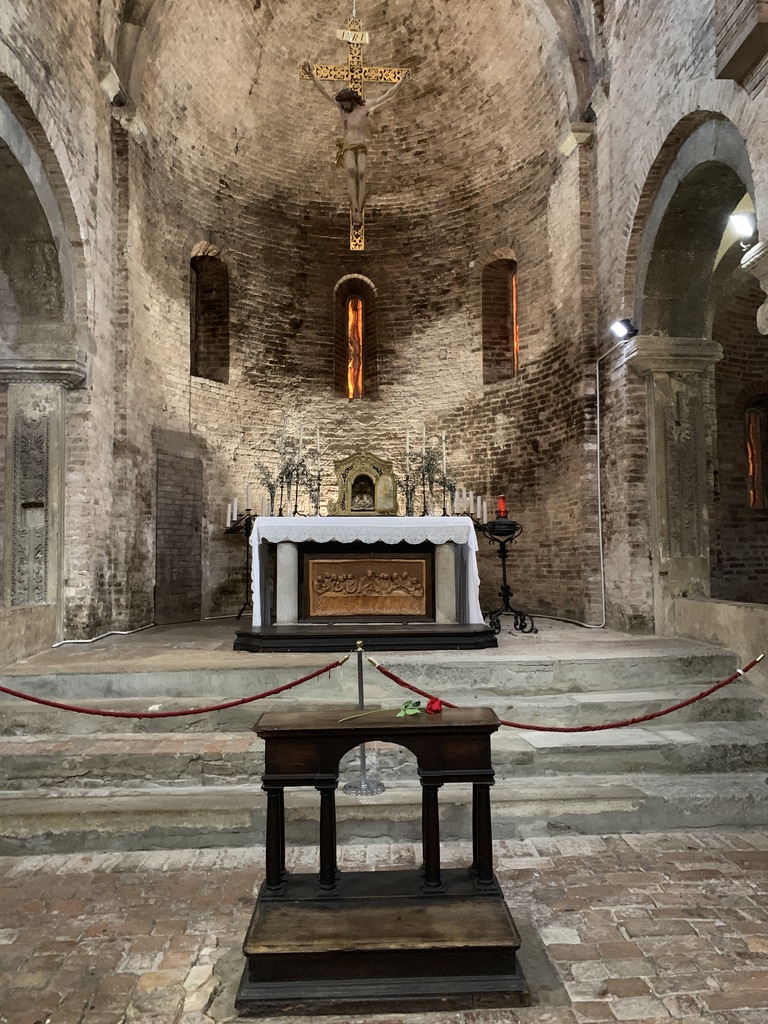
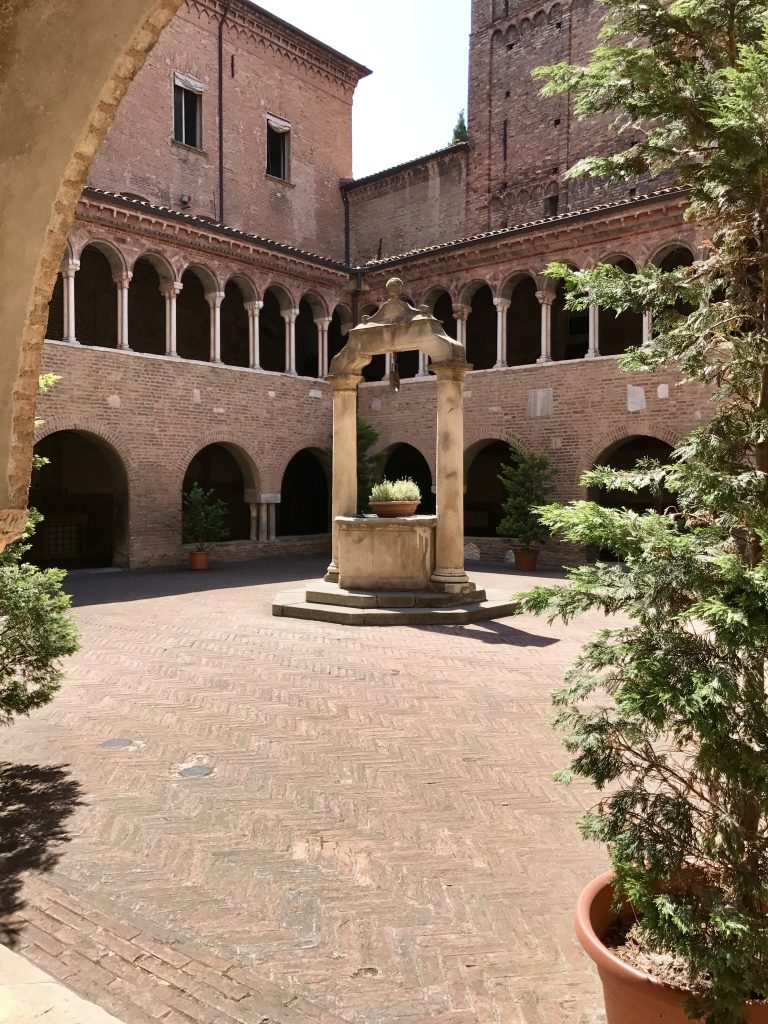
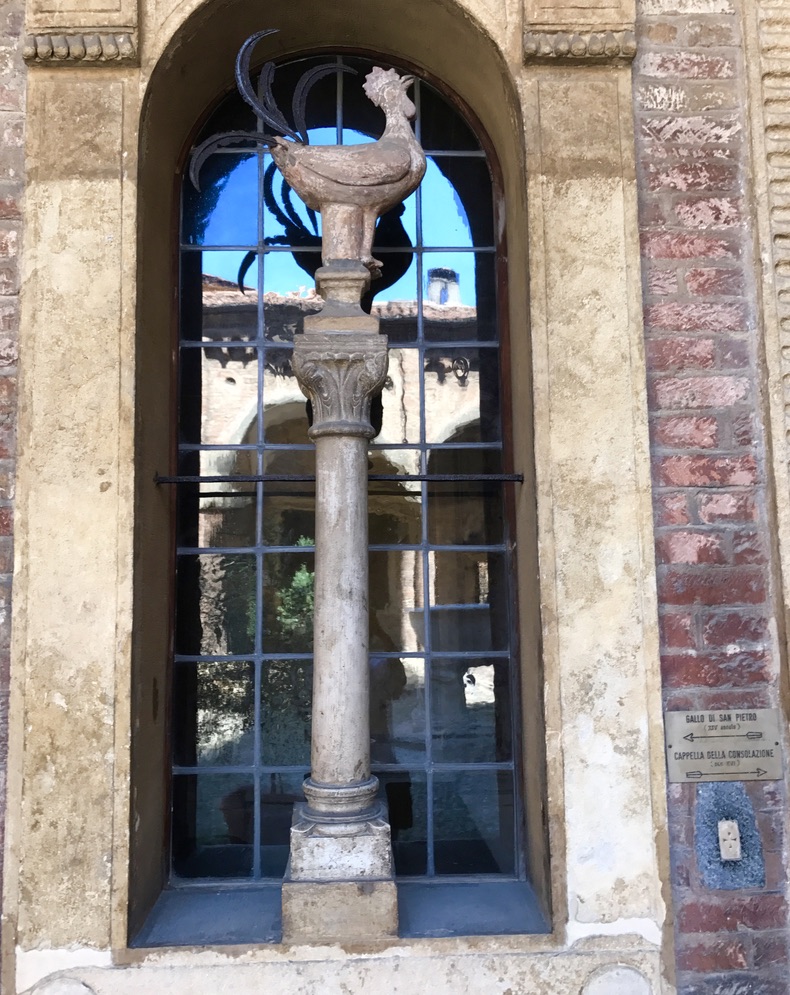
The Lesser Churches
The Church of Saints Vitale and Agricola (top, right) is to the right of Holy Sepuchre. Roman master and servant, they were the first two Bolognese to die as martyrs for their faith.
The saints’ sarcophagi remain in the dark, barebones church. There are no permanent pews, and the plain altar sits in a cove against the back wall. The diocese still holds Mass in this church, also, and the priests set out plain folding chairs for the faithful.
The last of the churches still remaining is at the far end of the courtyard. ( called the Holy Cross or the Martyrium). It’s rather odd as it is more horizontal than vertical. In other words, you enter and find chapels in front of you while the altar is to your left. Again, there are no pews or chairs, and I have no idea if they say Mass here or not.
The Porticoes
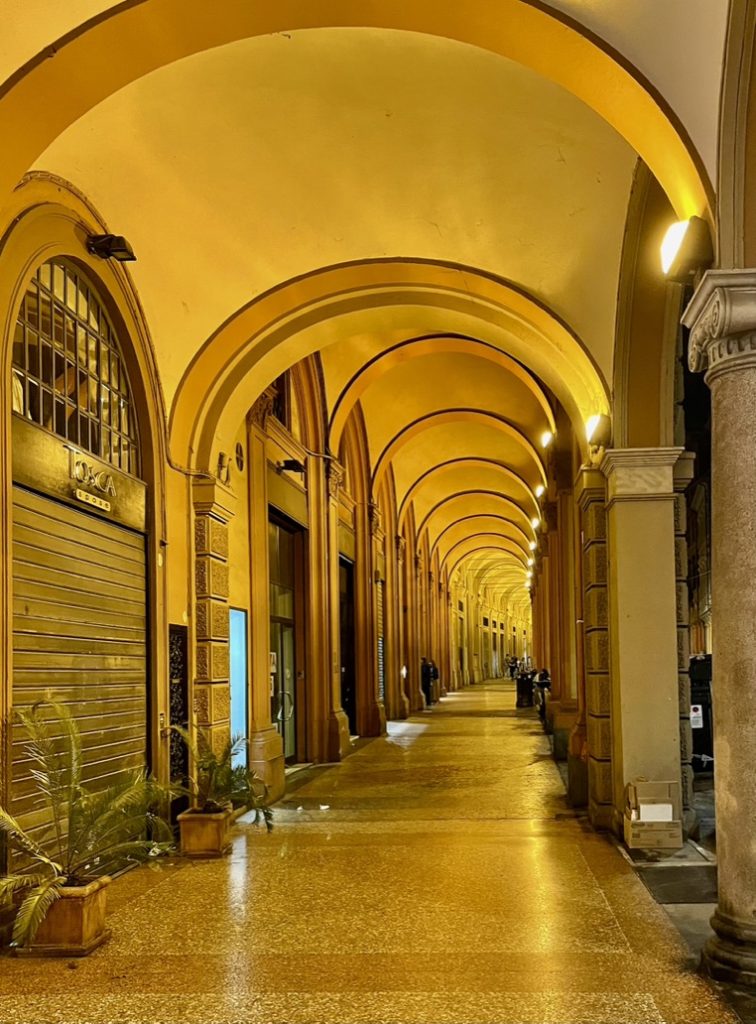
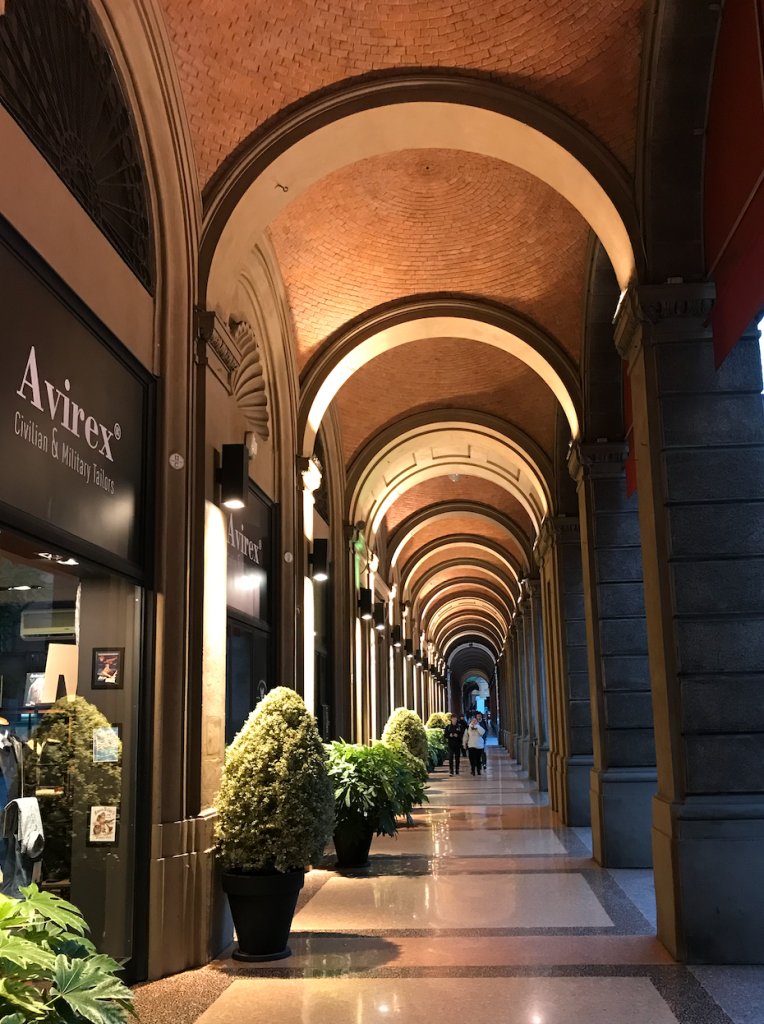
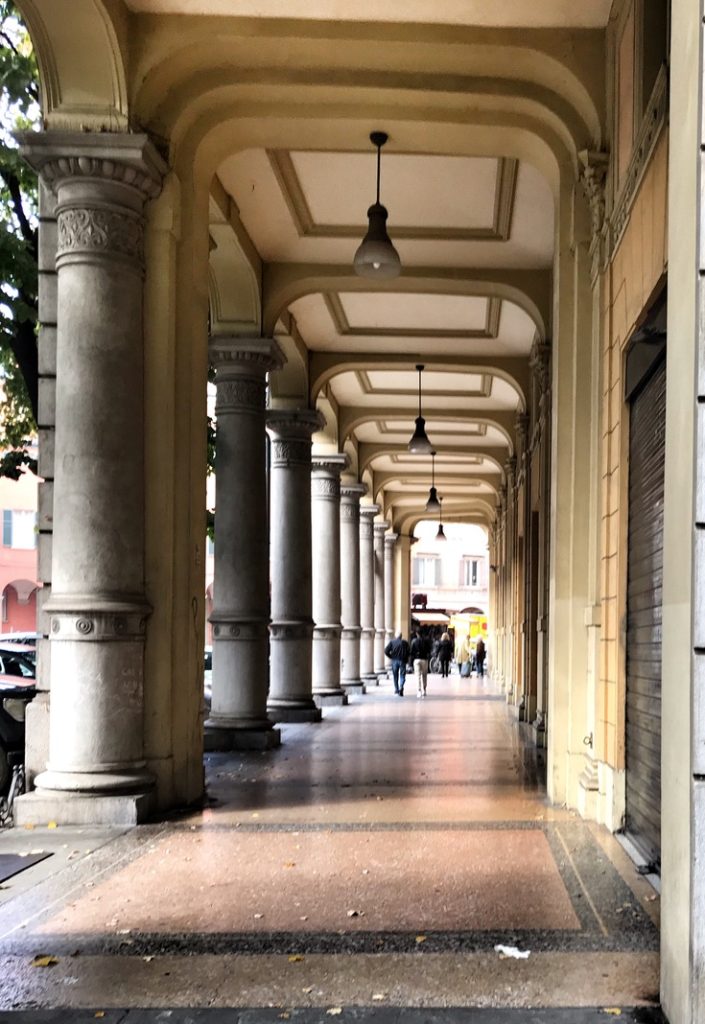
Bologna’s porticoes are one of the city’s most iconic and magical features. Stretching over 40 kilometers, they wind through the city’s historic center offering shelter from the sun and rain. These arched walkways are a perfect blend of function and beauty, inviting pedestrians to explore the city with ease.
Originally constructed to expand residential space, the porticoes became a hallmark of Bologna’s urban planning and social life. The Portico di San Luca (six kilometers), leads up the hill to the Sanctuary of Madonna di San Luca. Many elegant porticoes line streets like Via Farini and Strada Maggiore.
Named as a UNESCO World Heritage site in 2021, the porticoes are culturally, historically, and architecturally significant.
Fun Fact
Bologna regulated the building of the porticoes during the Middle Ages. The ceiling of the porticoes had to allow a man wearing a hat and riding a horse pass through.
The Canals
Mention Venice and its canals immediately come to mind. Many people don’t know that many other Italian cities had or still have canals. Bologna is one of them.
During the Middle Ages, Bologna had a complex network of canals that crossed the city. They were instrumental in the development of the city’s textile industry. In addition, they were a source of power, irrigation and transport. Much of the canal system is now underground, but some sections remain visible and offer a glimpse into Bologna’s past.
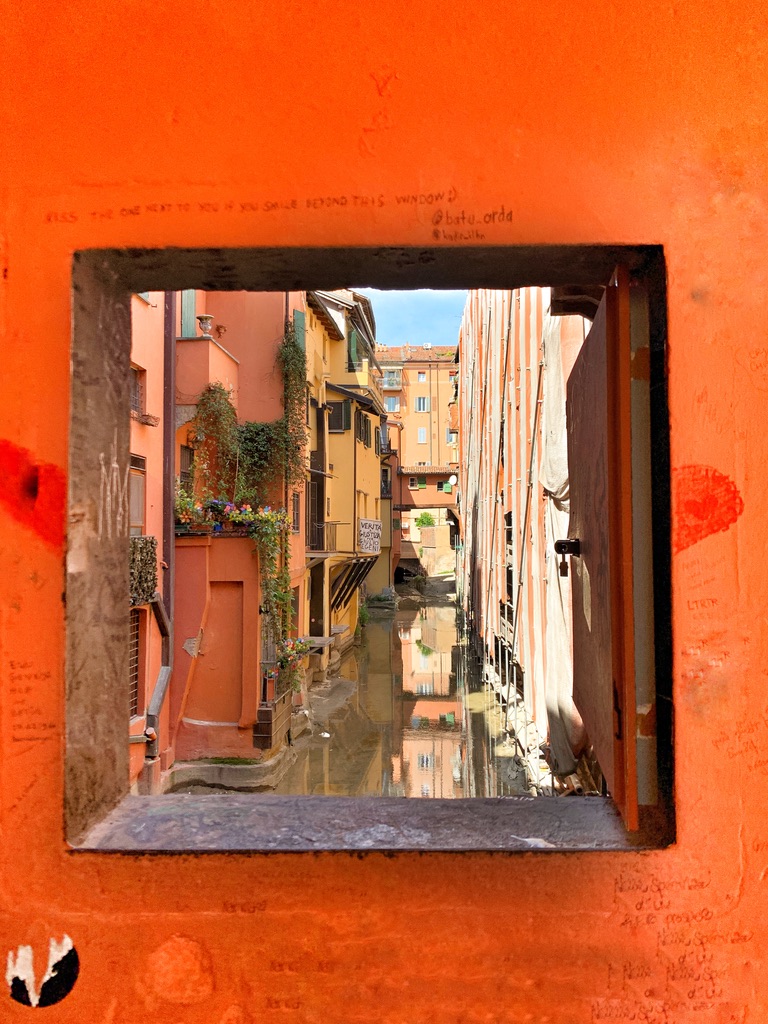
One of the most visible and popular canals runs by Via Piella. From a finestrella (window) cut in the walkway walls, you get a great view of the canal.
Le Due Torre
To me, Le Due Torre (two towers), the symbol of Bologna, are most magical. The definitely do not get the coverage they deserve as that leaning tower in a city west of Bologna takes most of it. Pisa’s tower, however, is neither the tallest nor the most leaning one of all.
During the MIddle Ages, Bologna was home to about 180 towers. Built by wealthy families for defense and status, they made Bologna resemble a 12th century Manhattan.
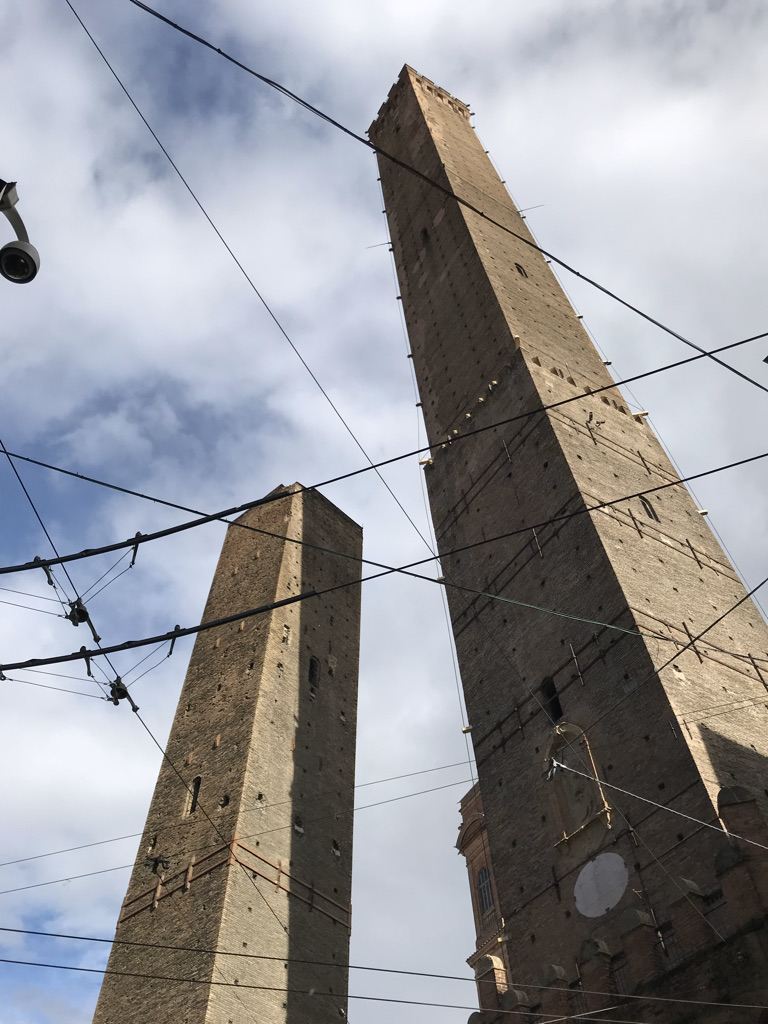
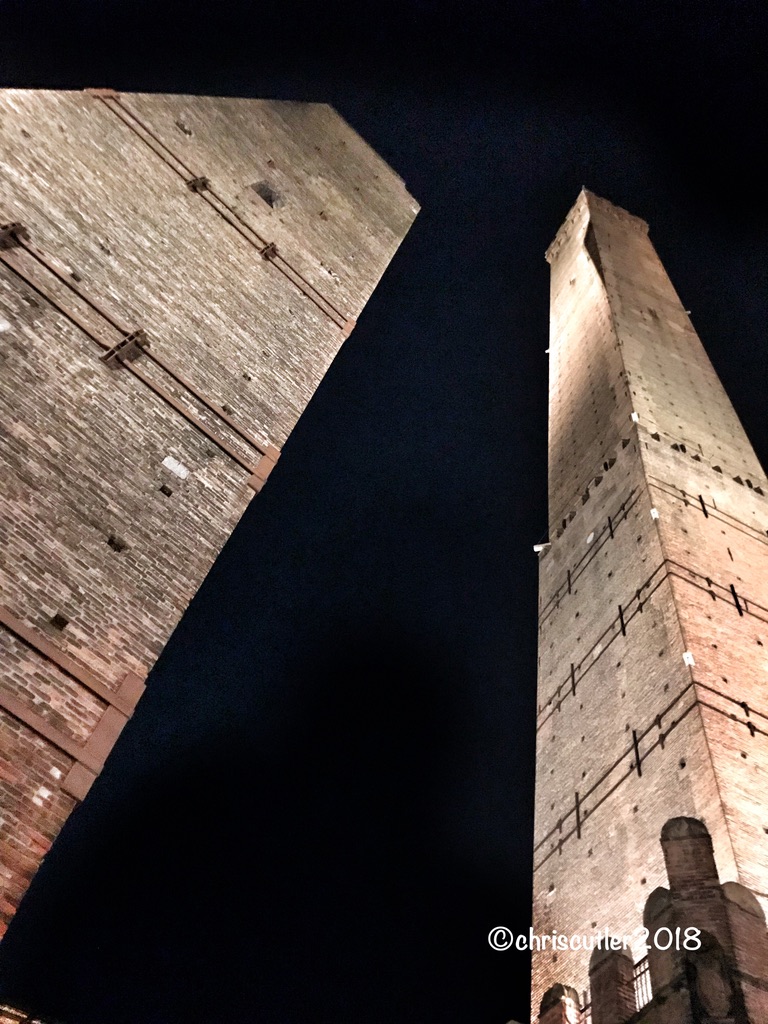
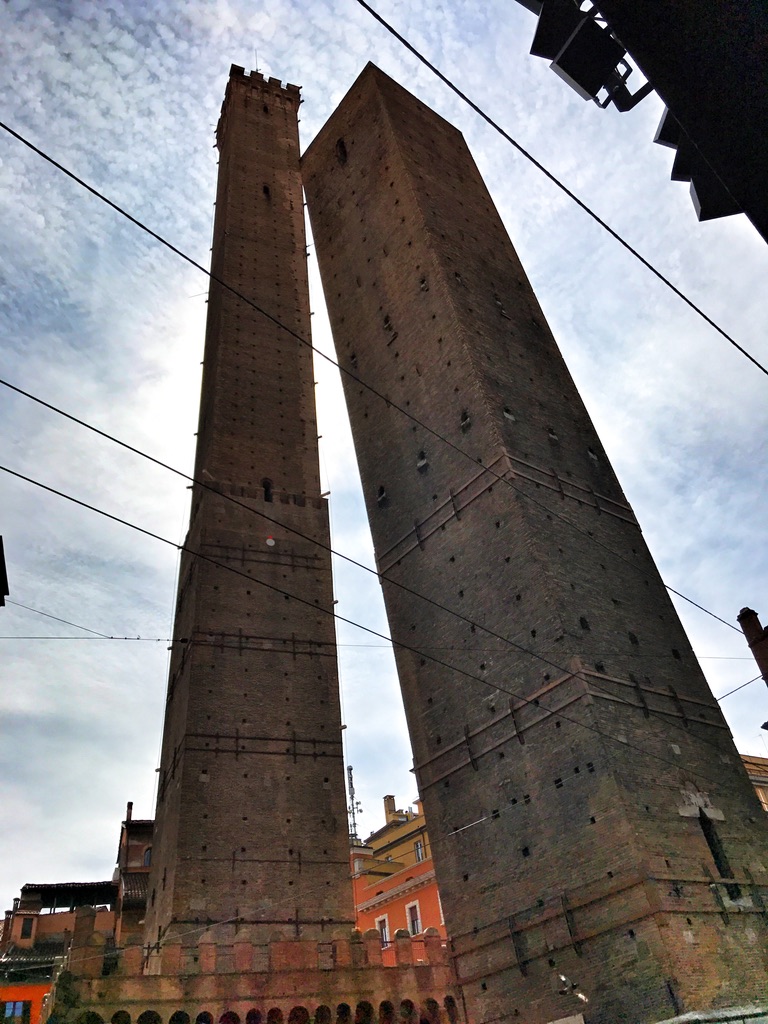
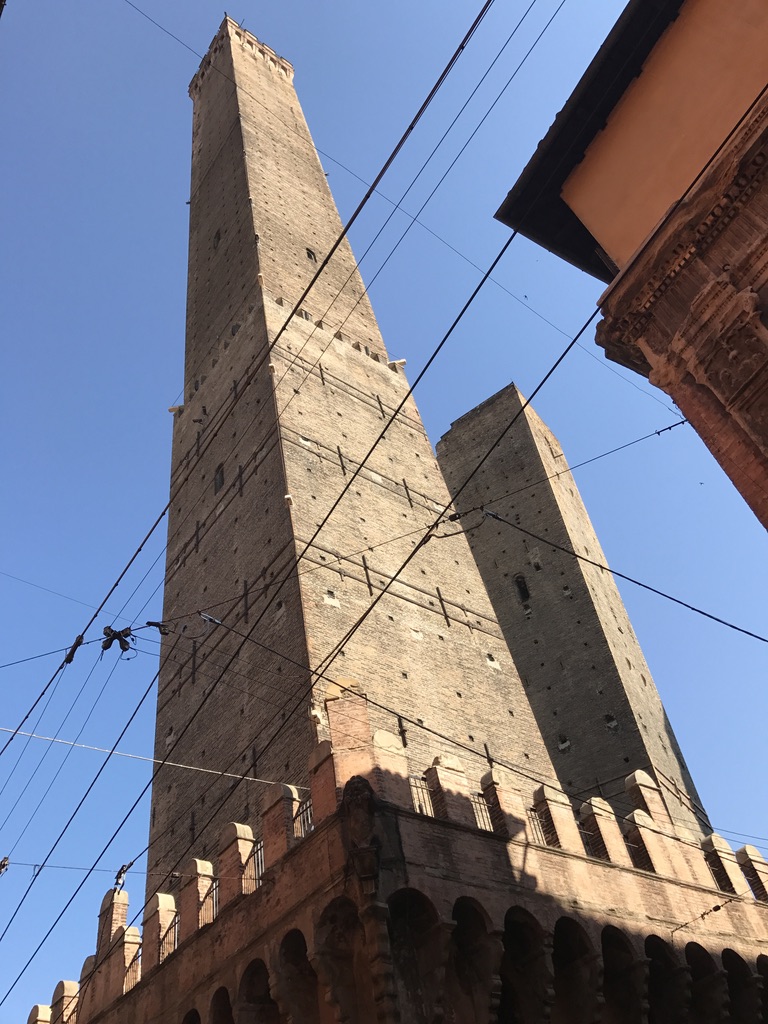
Today, fewer than 25 remain. Two of them, Garisenda and Asinelli, are symbols of the city. Asinelli stands at 97.3 meters (319 feet), and Garisenda is 47 meters (154 feet) tall. (By the way, the Leaning Tower of Pisa is only 55 meters—183 feet—high.
Garisenda, the smaller of the two towers, leans more and is in danger of falling over. In January 2024, city officials announced plans to secure and renovate the tower. One taller than it is now, Garisenda holds a place in literature as Dante, Goethe, and Dickens mentioned it in some of their works.
I am always taking photos of the two towers at different angles. You can see how different they look when I move just a few feet left or right.
More Magic
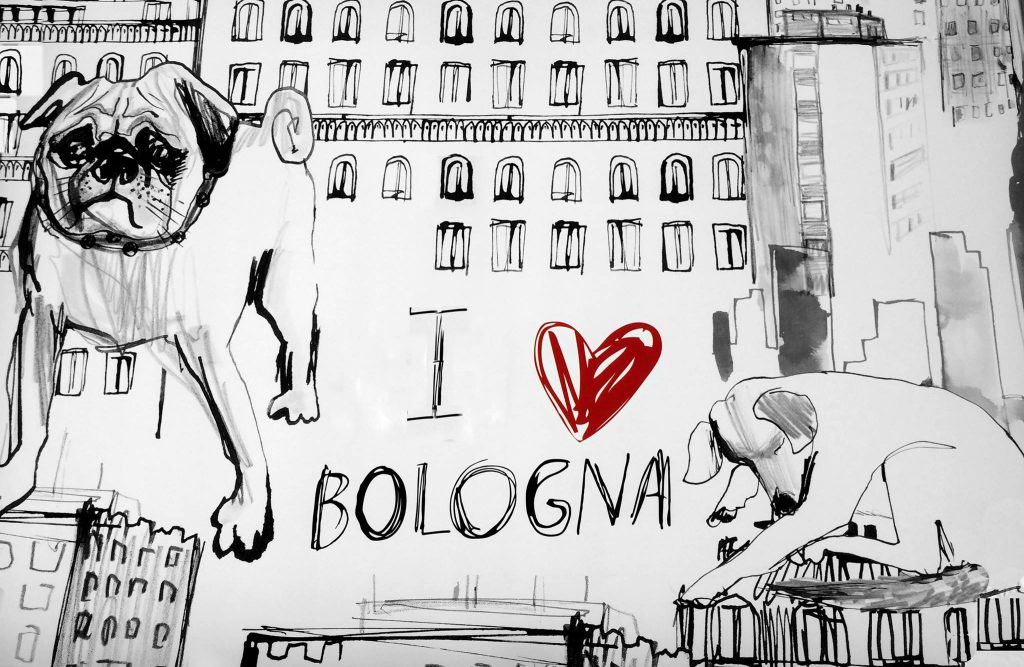
For me, Bologna is such a magical city. Each time I visit, I find something new (to me) and enchanting. Let us know if you’re interested in a few more places and sites that make my favorite city so marvelous.


